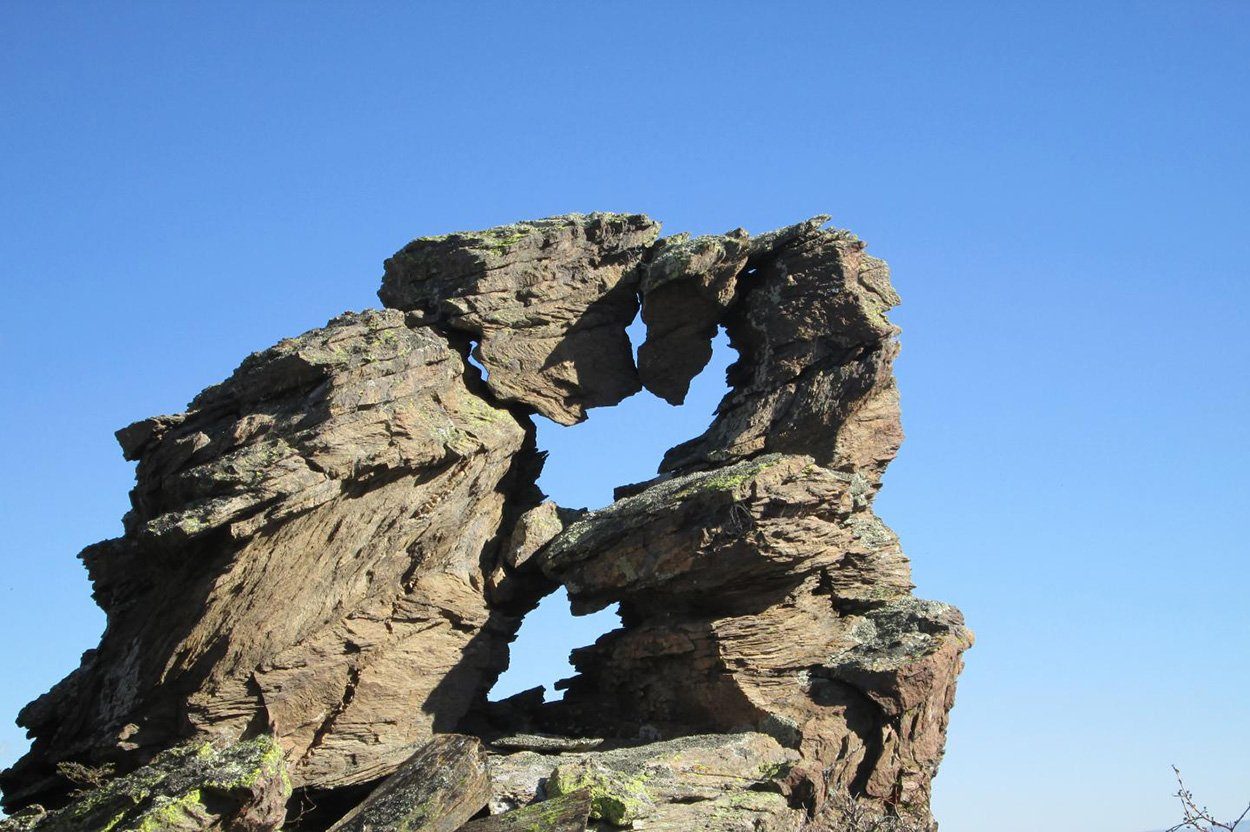
The stones of this rock formation in New Zealand only seem to balance on each other with luck. In fact, they have lasted for thousands of years – despite frequent earthquakes.
Near the city of Otago on New Zealand’s South Island is the Clyde Dam – the largest concrete dam in New Zealand. It was built around 30 years ago to dam two rivers and generate electricity from hydropower at the dam wall of the Lake Dunstan that was created in this way. When it was built, it was taken into account that there are frequent earthquakes in this region. However, there was uncertainty about the maximum strength of these vibrations.
This is where the rock formation pictured in this photo comes into play. It is located about two kilometers southwest of the dam in the Cairnmuir Plain, a plateau on which there are several such “balancing rocks”. It is typical of such formations that they stand wobbly on their tip or are only held in position by tiny bumps. Most of the time they were shaped in this way by erosion.
Because of their precarious balance, these rocks reveal a lot about the ground movements of their environment: Their mechanical stability can provide information about the forces and vibrations at which the formation collapses. Traces of age on the rock surface can be used to determine how long these rocks have existed in the wobbly balance. Both together then reveals how long there has not been an earthquake at the location of the rock formation whose strength exceeded the critical threshold.
This is exactly what researchers working with Mark Stirling from the University of Otago have investigated on the boulders in our photo. With it and an earthquake model of the region, they determined how strong the earthquakes theoretically expected in this area were with a recurrence probability of 10,000 years in the past. That in turn tells them whether the Clyde Dam is stable enough for these millennium tremors.
It turned out that the rocks in the Cairnmuir Plain have apparently remained in their unstable position for at least 24,000 years – that is, they have survived at least two of the severe earthquakes. The investigations also showed that the maximum acceleration of the subsurface during these quakes was significantly lower than previous estimates. The dam could withstand these. “There is nothing that needs to be done to strengthen the dam,” Stirling sums up.